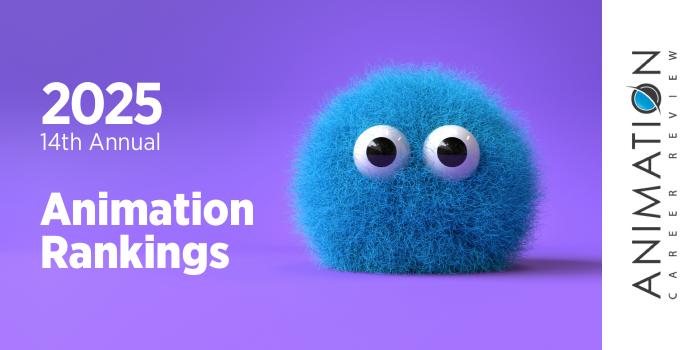Utah Valley University (UVU) follows a dual-mission model that combines university and vocational community college programs. This means, UVU students have many opportunities to engage in hands-on learning at companies and studios near Utah’s tech epicenter—Silicon Slopes.
Utah Valley University is also home to Scott M. Smith College of Engineering and Technology (CET). Serving more than 6,700 students, Smith CET provides over 120 degree programs across 11 technology and other departments. Led by more than 450 faculty and staff, the Smith CET engineering programs are accredited by the Accreditation Board for Engineering and Technology, Inc. (ABET).
Among the college’s departments is the Digital Media (DGM) Department. Within the department is an Animation and Game Development program featuring courses taught by professional animators and game producers from places such as DreamWorks Animation and Electronic Arts (EA). Leading to a BS, the Animation and Game Development program also provides opportunities for students to participate in associations and Animation and Game conferences.
Examples include the Digital Animation and Games Association (DAGA); Immerse Global Summit; the Interservice/Industry Training, Simulation and Education Conference; and the Game Developers Conference. Participation allows students to network and stay current with industry trends.
The Animation and Game Development BS has two tracks: 2D and 3D. Both options require 120 credit hours, including 35 credits in general education, 40 credits in the discipline core, and 45 credits in the track. Discipline core examples include 3D Modeling and Animation; Digital Media for Intercultural Communication; Advanced Character Rigging; Animation and Game Production Lab I-II; Animation Story Development; Digital Lecture Series; Animation I Lab; and Character Development.
Recognized as an Animation Center of Excellence by Toon Boom, the cohort-based 2D track focuses on animation, compositing, and character rigging. Course examples include Animation Essentials Lab; Digital Storyboarding; Advanced Technical Direction I-II; Concept Essentials; Technical Design and Direction; Performance Animation; Introduction to Compositing; Studio Technology Essential; and Digital Media Essentials.
The 3D track focuses on modeling, rigging, and scripting. Students in this track will take many of the same courses for the 2D track, as well as Scripting for Animation and Games I-II; Fundamentals of Programming; Game Development I-IV; and Intermediate Scripting. 3D students will produce group and individual titles throughout the program.
The culminating experience for the Animation and Game Development BS at UVU is the Senior Capstone. All students will develop real-world projects, individually and as part of a team, in consultation with a faculty advisor. This course may be repeated for a maximum of six credits towards graduation.
Graduates of the Animation and Game Development BS program at Utah Valley University are prepared to pursue roles in all areas of animation, game design and development, television production, film and video, user interface and user experience (UI/UX) design, advertising, social media, architecture, graphic design, science, aerospace, medicine, legal, government, health, education, and research.
Program alumni have been hired at places such as Industrial Light & Magic (ILM), Amazon, Gearbox Software, Northrop Grumman, Tektonux, and ArenaNet.
Utah Valley University has an additional option for students who would like to pursue a career that combines animation and illustration. The UVU Art and Design BFA, with an emphasis in Illustration, is part of the School of Art, which is one of the largest art and design schools in the state.
The BFA program provides opportunities to intern with places such as Paramount Studios, the Utah Museum of Contemporary Art (Utah MOCA), and the Metropolitan Museum of Art (The Met). BFA students also have opportunities to compete for international internships that may take them to places such as South Korea, Italy, the UK, and Germany.
Consisting of 120 credit hours, the UVU Art and Design BFA allows students to focus in an additional area of interest through electives. Course examples include 2D Animation for Illustration; Advanced Rendering of Forms and Surfaces; Sequential Animation; Character Design; Digital Illustration; 3D Texturing and Rendering; and Environment Design.
Discipline core and emphasis requirements also include animation and related courses such as Illustrative Media Techniques I-II; 3D Modeling; Advanced Illustration; 2D and 3D Design; Figure Drawing I-III; Conceptual Illustration; Computer Graphics; Imagination and Visual Literacy; and Narrative Illustration.
The Art and Design BFA at UVU culminates with the BFA Project, completed across two semesters. Final projects will be presented at the Student Art Show and Exhibition. Graduates are prepared to pursue positions at animation studios, game design companies, film studios, advertising agencies, television production studios, marketing firms, publishing companies, magazines, graphic design firms, and in-house art and design departments.
Some UVU Art and Design alumni also go on to launch their own studios or freelance businesses, while others go on to pursue graduate studies at UVU and other major universities.
Utah Valley University was established in 1941 as Central Utah Vocational School (CUVS). When it launched, the school’s primary function was to provide war production training. Today, UVU provides more than 300 different degree and certificate options across eight colleges and schools. The school also serves a record 47,400 students, making it the largest public university in the state. Utah Valley University is accredited by the Northwest Commission on Colleges and Universities (NWCCU).





